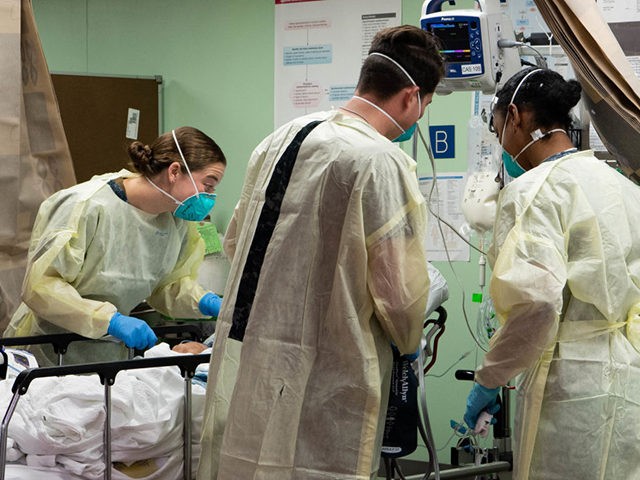The United States, as a whole, is roughly two weeks away from reaching the peak of the coronavirus pandemic, but the peaks for individual states will vary, with most occurring over the next four weeks, according to projections from the University of Washington’s Institute for Health Metrics and Evaluation (IHME).
When it comes to the arrival of the coronavirus, not all states are facing the same timeline. Some states, like New York and Louisiana, have quickly become epicenters of the virus in the United States and, as a result, will reach a resource peak weeks sooner than states like Kentucky and Missouri, which are not expected to reach their highest demand until the second week of May. The various projections, based on peak hospital resource demand caused by the virus, could explain why some governors are taking more aggressive, imminent actions in their response to the pandemic.
Here are the projected peaks for all 50 states, plus D.C., per the IHME model. The model takes into consideration the number of beds needed, as well as ventilators.
New York, for example, is expected to hit its resource peak April 9. The current model, at the time of this publication, estimates a bed shortage of 60,610 and 9,055 ventilators needed. A state like Kentucky, however, is not expected to reach its peak until May 12. It shows the state having a surplus of beds and 288 ventilators needed.
Here is the resource peak for each state. Resource details can be found here:
- Vermont: April 9
- New York: April 9
- New Jersey: April 9
- Michigan: April 10
- Connecticut: April 10
- Louisiana: April 10
- Idaho: April 12
- Massachusetts: April 14
- Iowa: April 15
- Pennsylvania: April 15
- Illinois: April 16
- Oklahoma: April 17
- Indiana: April 17
- Colorado: April 17
- Washington, DC: April 18
- Rhode Island: April 19
- Ohio: April 19
- Delaware: April 20
- Alabama: April 20
- Arkansas: April 20
- Nevada: April 20
- Minnesota: April 21
- Georgia: April 22
- Mississippi: April 22
- North Carolina: April 22
- Arizona: April 24
- South Carolina: April 24
- Washington: April 24
- Maine: April 25
- Tennessee: April 26
- California: April 26
- Wisconsin: April 26
- Utah: April 27
- Kansas: April 28
- New Hampshire: April 30
- New Mexico: April 30
- Alaska: April 30
- Hawaii: April 30
- Nebraska: April 30
- Montana: April 30
- West Virginia: May 1
- North Dakota: May 1
- South Dakota: May 1
- Wyoming: May 1
- Texas: May 2
- Oregon: May 3
- Florida: May 3
- Missouri: May 11
- Kentucky: May 12
- Maryland: May 14
- Virginia: May 17
The model shows April 14 as the peak for the United States as a whole. However, it notes that the projections are contingent on the continuation of “strong social distancing measures and other protective measures.”
President Trump officially extended the “Slow the Spread” coronavirus guidelines to April 30 during a press conference over the weekend.
“Nothing would be worse than declaring victory before the victory is won, that would be the greatest loss of all,” Trump, who had remained optimistic on reopening the economy on Easter, said during the press conference in the Rose Garden.
“The better you do the faster this whole nightmare will end, therefore we will extend our guidelines to April 30 to slow the spread,” he continued, predicting that the country will be “well on our way to recovering” by June 1.

COMMENTS
Please let us know if you're having issues with commenting.